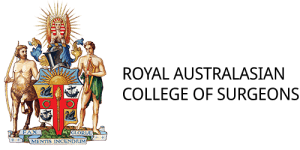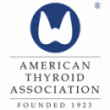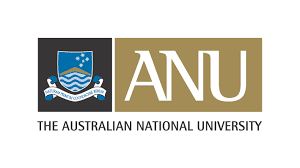MINIMALLY INVASIVE SURGERY
Dr Ebrahimi has extensive experience in minimally invasive surgery of the thyroid, parathyroid and parotid gland as well as throat cancer and will offer these approaches if it is appropriate and safe for your surgery. To obtain the best results it is important to select the approach carefully and individualise the decision for each patient.
What is minimally invasive surgery?
Minimally invasive surgical approaches use keyhole or small incisions and minimise tissue trauma during surgery. Minimally invasive surgery offers patients several benefits such as smaller scars and better cosmetic results, reduced pain, faster recovery and return to work.
Minimally invasive parathyroidectomy (MIP)
Primary hyperparathyroidism is a condition in which one or more of the parathyroid glands in the neck are overactive and leads to raised calcium levels in the blood. The only treatment for primary hyperparathyroidism is an operation called Parathyroidectomy to remove the abnormal parathyroid gland(s). In the hands of an experienced parathyroid surgeon, the cure rates with parathyroidectomy are 95-98% and the operation is very safe with most patients recovering quickly.
If pre-operative scans confidently localise a single abnormal parathyroid gland, Dr Ebrahimi will offer you a minimally invasive parathyroidectomy (MIP). This is a focused operation involving removal of the abnormal parathyroid through a small incision (2-3cm) in your lower neck and takes less than an hour.
Minimally invasive parathyroidectomy is performed via a short neck incision (2-3cm) with the advantages of less scarring, a better cosmetic result and less post-operative pain. Dr Ebrahimi is able to successfully use a minimally invasive approach in the vast majority of patients.
LEARN MORE ABOUT PARATHYROIDECTOMY
Minimally invasive thyroidectomy
For selected patients, Dr Ebrahimi performs minimally invasive thyroidectomy using a small neck incision up to 4cm in size (MINET: minimally invasive non-endoscopic thyroidectomy). Clinical judgement is required to determine which patients are suitable for a minimally invasive approach based on the size of the thyroid and the reason for surgery.
LEARN MORE ABOUT THYROIDECTOMY
Minimally invasive parotidectomy
Minimally invasive parotidectomy is an approach that uses a combination of strategies to minimise the long-term impact of parotidectomy. These include:
- Using incisions such as the parotidectomy mini-incision or modified face-lift incision to hide the scar
- Use of fat grafts and other reconstructive procedures to prevent contour change after surgery and reduce risk of post-operative Frey’s syndrome (sweating from the skin in front of the ear when you eat).
- Minimising the amount of salivary gland tissue that is removed to maximise function
- Saving sensory nerves around the parotid gland when safe to do so
- Dr Ebrahimi always uses facial nerve monitoring during parotid surgery to ensure all of it’s branches are preserved and remain functional
Dr Ebrahimi has extensive experience with minimally invasive approaches to parotid tumours and will discuss whether they are appropriate in your case. Very few parotid surgeons can offer these techniques safely.
LEARN MORE ABOUT PAROTIDECOMY
Transoral Robotic Surgery (TORS) for throat cancer
Transoral robotic surgery (TORS) allows minimally invasive surgical treatment of oropharyngeal cancers (including tonsil cancer and tongue base cancer). The treatment has cure rates as high as traditional morbid open surgery and high dose radiation treatment but aims not only to cure the cancer but to maximise long term function (particularly swallowing) and quality of life.
Transoral robotic surgery (TORS) uses the state of the art da Vinci Surgical system, which consists of:
- A remote console operated by the surgeon. This provides a high-resolution magnified 3-dimensional view of the operative field in the throat
- A surgical cart positioned next to the patient delivers robotic arms and instruments that extend into the patient’s mouth, remotely controlled by the surgeon and used to perform the surgery
Use of the robot offers surgeons enhanced visualization, dexterity and freedom of movement, elimination of tremor and increased precision when operating. More importantly, in the head and neck region it offers a minimally invasive surgical option for selected patients with throat cancer. This means we can remove the cancer in a very precise way through the mouth and avoid traditional invasive surgery (using a mandibulotomy approach) which involves cutting the lip and jaw bone as well as nerves and muscles in the mouth and always requires a major reconstruction.
Ardalan was trained in TORS during his fellowship at the Mayo Clinic by leading surgeons who helped pioneered the technique internationally. He has years of clinical experience performing TORS and established the transoral robotic surgery (TORS) program at National Capital Private Hospital when he moved to Canberra in 2018 to offer patients with throat cancer in the ACT and surrounding regions a minimally invasive surgical option. He is the only Canberra based Transoral Robotic Surgeon.
Given the potential benefits of TORS, it’s important that patients with tonsil and tongue base cancer who may be a candidate for the surgery be given the option of seeing a specialist for assessment to determine if TORS would be a good treatment choice for them. The best outcomes are obtained when patients are reviewed and discussed by a multidisciplinary team of specialists to tailor the treatment recommendations to the individual patient. Dr Ebrahimi takes a balanced approach when making treatment recommendations and will discuss the pros and cons of each option with you in detail to help you make informed decisions.
LEARN MORE ABOUT TRANSORAL ROBOTIC SURGERY (TORS)














